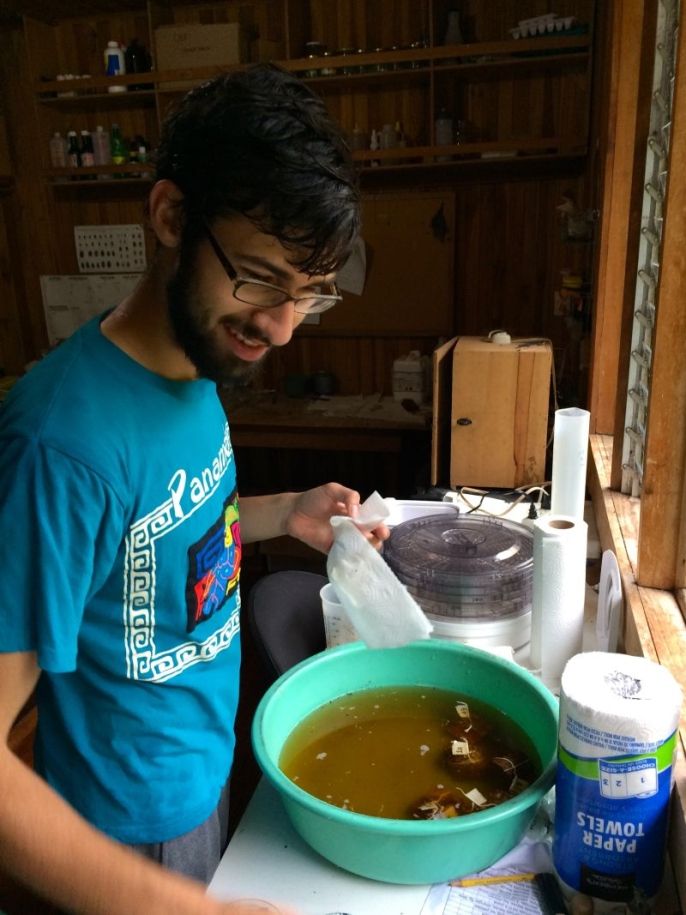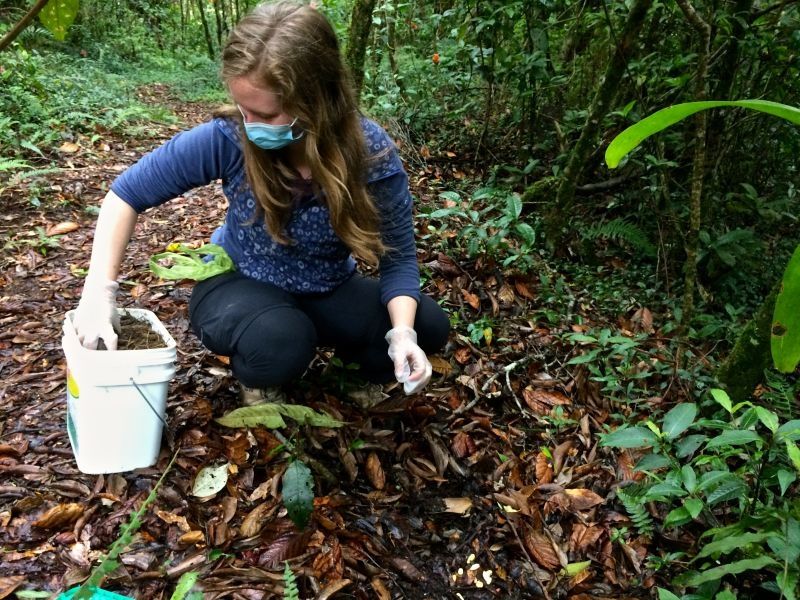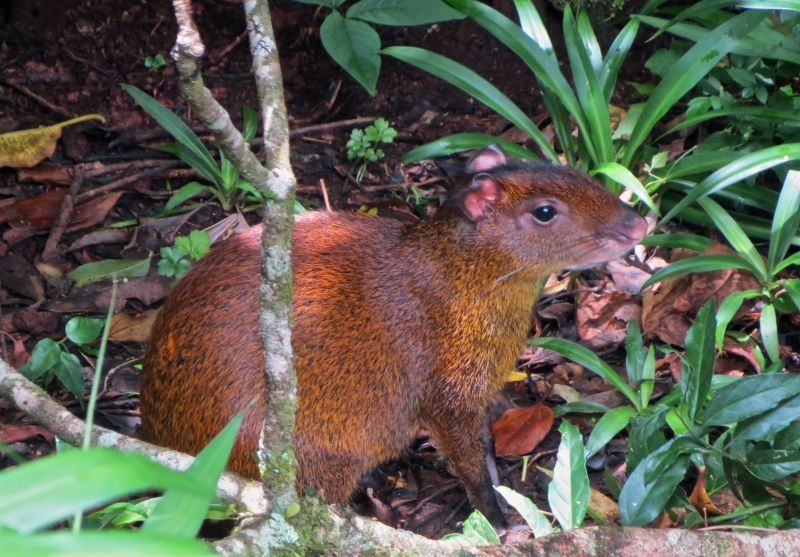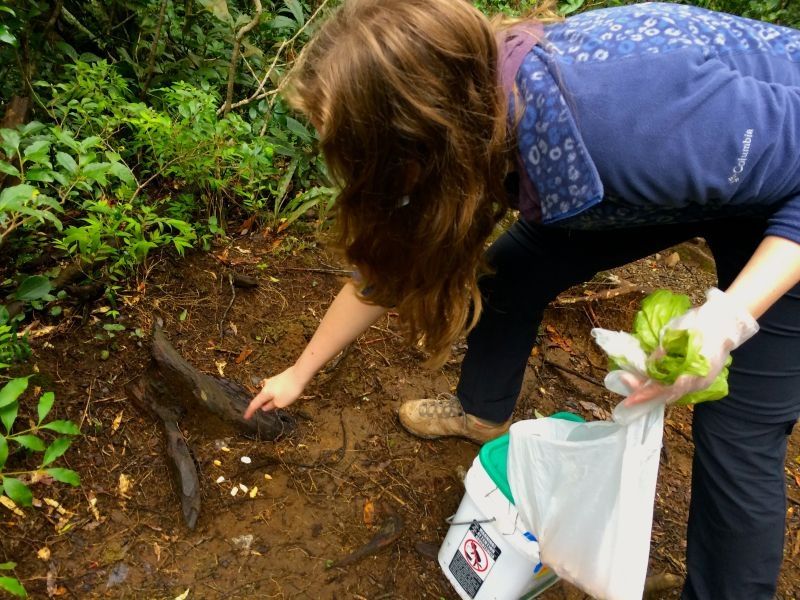Student's Projects, Independent Research in Tropical Ecology (Part 2)
The research keeps going on and our students continue gathering really interesting data for the different topics they are all exploring.
Vikram Norton from the University of Massachusetts-Amherst is studying the fire resistance of Cloud Forest Trees. Vikram found that in temperate and lowland tropical forest different characteristics of trees bark will give them different resistance to fire and as the climate is changing globally forest fires are becoming more common; forest fires are not common in Tropical Cloud Forests, but as the temperatures are increasing and these forests are becoming drier this may becoming a problem in the future, hence his interest on this topic. Vikram choose 10 different common species of trees in the Monteverde area and collected a small piece of bark from 3 individuals of each species, for each bark sample he measured the density, thickness and weight (dry and wet); and once the samples were completely dry after spending 48 hours in a food dehydrator the fire trials began, he put the samples over a direct flame and measure the time it take the sample to reach 60 degrees Celsius and the time it takes to set up on fire.
Vikram Norton (University of Massachusetts-Amherst) getting his bark samples ready to measure the wet and dry weight.
Some of the 30 different bark samples, from 10 different species, Vikram is examining during his independent research project.
Vikram Norton (University of Massachusetts-Amherst) doing his burning experiments, here measuring the temperature of one of his bark samples.
Sarah Aitken from the University of Pennsylvania is looking at the predation and dispersion of seeds by Agoutis (Dasyprocta punctata). To see this Sarah is using peanuts as seeds and she is using different treatments with animal dung; to observe if seeds that have go throughout the digestive system of an animal and expelled out in the dung have a higher chance of survive the predation of a seedeater Sarah is setting up in the field 10 stations with 10 seeds (peanuts) as control and 10 stations with 10 seeds cover with different kinds of animal dung: pig, horse, and cows and measure the number of seeds taken by agoutis or any other animals. Sarah also wants to see if seeds that are placed in an area with traces of a big predator will deter these seed predators or dispersers to come close to them, for this she is using seed stations with cat pee and seed stations with nothing on them as controls.
Sarah Aitken (University of Pennsylvania) setting up her seed stations on the field.
Sarah Aitken (University of Pennsylvania) ready to cover one of her seed stations with horse dung.
Seed stations cover with A) horse dung and B) cow dung.
Main predator of Sarah's seeds, the agouti (Dasyprocta punctata).
Related Posts
CIEE Monteverde Campus Used in Insect and Light Research Study
Have you ever wondered why insects are drawn to artificial light? From campfires to porch lightbulbs, moths and other insects appear to congregate around these sources of light as soon... keep reading
Our program through the eyes of a Student
Our Summer student Maddie Beale from the State University of New York at Fedonia wrote a blog about how she found us, the process of choosing our program and the... keep reading
Independent Research Projects: Part I
The Tropical Ecology & Conservation students are working on their independent projects right now, many different ecology topics are being cover that involve both field and lab work. From Leaf-cutting... keep reading







